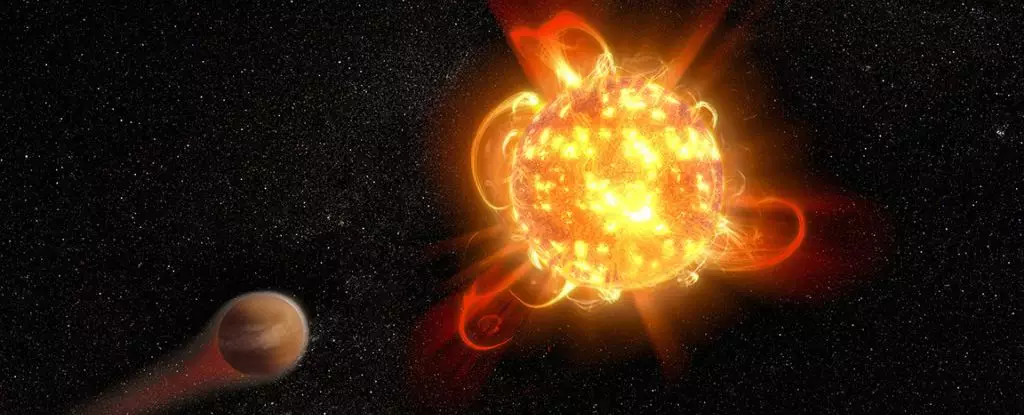The cosmos is home to an array of stellar phenomena, with M-class stars, commonly known as red dwarfs, capturing a significant share of attention in astrobiological discussions. Due to their cooler temperatures and extended lifespans, red dwarfs appear deceptively amiable when compared to larger stars like our Sun. These traits, along with their sheer popularity—claimed to represent around 70% of the Milky Way’s stellar population—have made them prime candidates in the hunt for extraterrestrial life. However, emerging research posits that these ostensibly hospitable stars may pose surprising risks to any potential planets orbiting them.
At first glance, the characteristics of red dwarfs paint an optimistic picture. Their low energy output allows them to burn fuel at a leisurely pace, which often translates to lifespans of trillions of years. This longevity creates a larger window for the potential development of life. Moreover, their size and temperature afford a relatively stable environment that is less likely to undergo the volatile changes seen in many other star types. The habitable zones of these stars, where liquid water could theoretically exist, lie closer to their surface, further enhancing the prospect of finding life in these systems.
The small size and moderate temperatures of red dwarfs have led scientists to believe they are not only stable but also capable of supporting rocky planets within their habitable zones, thereby offering optimal conditions for biological diversity to flourish. As a result, planets within this zone have gained considerable attention in the search for extraterrestrial life.
Nevertheless, recent studies have unveiled unsettling truths about these stars. One of the notable shortcomings of red dwarfs is their propensity to emit frequent and powerful stellar flares—intense bursts of energy that can significantly impact the atmospheres of orbiting planets. A recent research paper scrutinizes data collected over a decade by the now-retired GALEX space telescope, culminating in a shocking discovery regarding the scale of ultraviolet (UV) radiation produced during these solar flares.
In contrast to earlier research that primarily focused on optical wavelengths, this study analyzed radiation emitted in both the near and far UV spectrum. The findings present a paradigm shift in our understanding of the implications of red dwarf flares for habitability. Contrary to previous assumptions, the radiation emitted could be far more deleterious than initially believed.
The research found that a staggering 98% of the observed stellar flares released UV radiation levels that significantly exceeded previous blackbody spectral models. Earlier theories assumed that the emissions would closely follow a blackbody spectrum with an average temperature of around 8,727 degrees Celsius (15,741 degrees Fahrenheit) for these flares. However, this viewpoint has now been called into question, suggesting that red dwarf flares may belch forth an overwhelming amount of energy that could jeopardize planetary atmospheres.
The potential consequences of these intense UV emissions are alarming. Moderate quantities of UV radiation can catalyze essential complex molecules, theoretically supporting the genesis of life. However, in excessive amounts, this high-energy radiation can erode planetary atmospheres and strip away crucial protective layers like ozone. Consequently, planets that might otherwise meet criteria for habitability—such as retaining liquid water—could be rendered inhospitable due to relentless solar bombardment.
This shake-up in our understanding compels us to reassess the notion of habitable zones around red dwarfs. Planets that previously appeared potentially welcoming for life may harbor fatal flaws that render them uninhabitable. The interplay between a star’s stability, its flare activity, and the resulting atmospheric conditions presents a more complex picture of habitability than was previously recognized.
While red dwarfs remain prevalent in our galaxy and seem to offer the potential for life-hosting planets, the newfound knowledge regarding their intense flare emissions warrants a cautious approach to astrobiological studies. As we continue to explore these distant worlds, it is essential to integrate the implications of stellar activity into our criteria for assessing potential habitability. The allure of red dwarfs must now be viewed through a more discerning lens, balancing their longevity and stability against the stark realities of ultraviolet radiation risks.


Leave a Reply